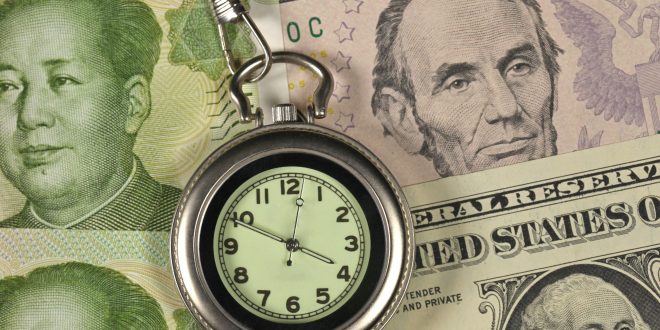Weekly Recap: February 15-19, 2021
Global markets continued to be dominated by reflation expectations last week. In addition, various economic data and indicators reflected variably on the outlook for economic growth and recovery from the impact of the Coronavirus pandemic.
Expectations for a rise in inflation in the United States did not seem to pose any concerns for American monetary policy makers, as evident by recent remarks by officials in the Federal Reserve, who seemingly do not fear a rise in inflation and remain optimistic about recovery this year.
Furthermore, the minutes of the most recent meeting for the Fed showed that the American economy remains far from the Fed’s targets, despite quantitative easing materially helping financial conditions and providing substantial support to the economy.
Meanwhile, the U.S. Treasury Secretary reiterated her call for increased stimulus, noting that tax hikes by the Biden administration later this year could help fund the increased spending. Janet Yellen also called for caution by stock investors and said that Bitcoin is a highly speculative asset.
On the other hand, minutes of the European Central Bank’s (ECB) January meeting showed a commitment to keeping a steady hand on economic stimulus and efforts to help the European economy recover from the impact of the Coronavirus pandemic.
The minutes showed that policymakers believe it will take some time for the stimulus measurements to effectively achieve its target, with little worries about a rise in inflation soon.
It is worth noting that consumer confidence in the European Union rose by 0.7 points to -14.8 in February.
Bitcoin
Meanwhile, Bitcoin continues to break new all-time high levels with a rally that started supported by increased institutional demand and is now supported by positive expectations for the world’s largest cryptocurrency that exceeded $1 trillion in market capitalization.
Treasury Yields
Treasury yields in the United States saw their biggest weekly increase in about six weeks, as expectations for a rise in inflation continued.
The benchmark 10-year Treasury bond yield rose by 14.5 basis points for the week, recording its biggest rise since the first week of 2021. Similarly, the return on the 30-year bonds leveled up by 13.7 basis points this week, while the two-year note yield finished the week nearly unchanged.
Earlier in the week, the gap between the two-year and the 10-year note yields reached its highest level in about four years.
USD
The U.S. Dollar (USD) showed a mixed performance this week, after rising strongly supported by the surge in Treasury yields, it gave up all of its gains and turned to weekly losses.
The Dollar Index (DXY), which measures the greenback’s performance against a basket of six major international currencies, closed the week down by about 0.13% at 90.36, after rising by mid-week near 91.
The negative performance by the USD came after data showed a rise in jobless claims in the United States, which negatively affected expectations for a quick and steady recovery in the U.S.
GBP
The British Pound (GBP) stood as one of the best performers against the U.S. Dollar (USD) last week, as the Sterling ended the week above the $1.40 mark, a level not seen since April 2018.
The rise of the GBP to its highest level in about three years came amid the decline of the USD, coupled with an improved performance by the GBP that is supported by positive expectations for the UK’s economy with an effective rollout of Coronavirus vaccines.
Hopes have increased for easing lockdown measures in Britain with the wide distribution of vaccines, and despite the UK’s flash composite purchasing managers’ index (PMI) remaining below the 50 mark, it improved significantly this month reaching 49.8 from 41.2 in January.
It is now highly unlikely that the Bank of England (BoE) will implement negative interest rates, and expectations for reopening the economy have increased recently.
It is worth noting that the BoE is sticking with its current bond-buying program, which Deputy Governor Dave Ramsden said would be complete at the start of November 2021.
Stock Markets
European stocks extending their gains for the third consecutive week, amid improved investors’ sentiment that was supported by positive earnings reports by leading listed companies and positive economic data that fueled hopes for recovery from the pandemic.
In Wall Street, the Dow Jones Industrial Average closed higher by 0.1% for the week, while the S&P 500 registered weekly losses of 0.7%, and the Nasdaq Composite Index declined by 1.6% on a weekly basis.
Gold
Gold prices recorded two consecutive rises by the end of the week but could not recover their weekly losses that remained the biggest since January 8.
On Friday, gold futures fell to their lowest intraday level since June 2020 at $1,759, and plunged by about 2.5% on a weekly basis.
The fall of gold prices is attributed to the rise in Treasury yields to high levels.
Oil
Oil prices gave up most of the gains it recorded this week amid expectations that major crude producers forming the OPEC+ alliance could decide to raise output next month. Temporary support was provided by the winter storm in Texas, which led to the shutdown of major oil facilities.
Brent crude futures rose by 0.8% last week, while the U.S. benchmark West Texas Intermediate (WTI) futures lost 0.4% and gave up the $60 mark, which it reached by mid-week for the first time since January 2020.
Calendar
Eurozone GDP came in at 0.6% in Q4 of 2020, indicating stagnant growth. German ZEW economic confidence accelerated for the third month in a row, up to 71.2 from 61.8.
The German and Eurozone manufacturing PMI came in at 60.6 and 57.7 in January, respectively, figures indicating a strong expansion but the services sector remains in contraction with the services PMI coming in at 45.9 and 44.7, respectively.
In the United Kingdom, inflation moved higher, with the headline CPI rising in January to 0.7% from 0.6%, its highest level in 3 months. The core CPI, which excludes food and energy, remained steady at 1.4%.
Across the ocean, in Canada, the headline CPI rose 0.6% in January from -0.2% previously and the core CPI which excludes food and energy price fluctuations rose 0.5%, the best performance since February 2020.
The economic activity in Canada’s private sector contracted at a softer pace in January than it did in December with the Ivey Purchasing Managers Index (seasonally adjusted) rising to 48.4 from 46.7.
Further details showed that the Employment Index dropped to 41.5 from 45.8, the Inventories Index rose to 56.7 from 43.8 and the Prices Index jumped to 82.8 from 66.9.
In the US, the retail sales for January indicated a strong recovery in consumer spending. The headline reading jumped 5.3%, while core retail sales came in at 5.9%, and both numbers beat expectations of 1.1%. Services and manufacturing remain well into expansionary territory, as the January PMIs came in at 58.5 and 58.9, respectively.
In the US, January retail sales indicated a strong recovery in consumer spending. The headline reading jumped 5.3% while the core retail sales came in at 5.9%. Expectations for both issues stood at 1.1%. The FOMC meeting minutes echoed a dovish message from the Fed, which indicated that it has no plans to curtail quantitative easing anytime soon. Services and manufacturing remain in expansionary territory, with the PMI for January coming at 58.5 and 58.9, respectively.
Coronavirus
In UK, the estimated COVID-19 reproduction “R” number for the whole United Kingdom currently stands in the 0.6-0.9 range, compared to the 0.7-0.9 range announced last week
In France, The French Ministry of Health stated that 22 thousand and 46 new cases of Coronavirus were recorded on February 21, up from 16 thousand and 546 last Sunday, when the number of infections decreased for a short period.
The average number of new cases over a period of seven days increased above the 20,000 mark again, after the increase in cases on a weekly basis for the fourth day.
The ministry also announced the registration of 160 new deaths today, down from 183 yesterday, bringing the total deaths to 84,306. The total number of injuries so far has reached 3.6 million.
The Brazilian Ministry of Health announced the registration of 1,212 new deaths from Covid-19 and 57 thousand and 472 new confirmed cases of Coronavirus on Saturday.
So far, Brazil has recorded a total of 245,977 deaths and ten million 139,148 confirmed cases of Coronavirus.
 Noor Trends News, Technical Analysis, Educational Tools and Recommendations
Noor Trends News, Technical Analysis, Educational Tools and Recommendations





